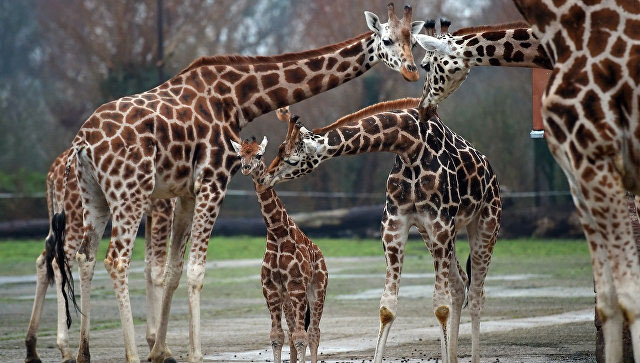The pattern spots on the skin are characteristics of giraffe identification
In the new study, American zoologists found that the giraffes inherited the position of pattern spots on the skin from mother deer and these spots were unique, unchanged by age, given lets distinguish each giraffe from the same type.
According to a new study published in the journal PeerJ, the positions of pattern spots on giraffe skin are inherited from the mother.

The pattern spots on the skin are important for the survival of the baby deer - (Photo: AFP).
The position of the giraffes on the skin of the giraffe is unique and does not change with age, allowing the different giraffes to be distinguished from each other. Now scientists have not really understood the role of these pattern spots in the life of giraffes.
There are hypotheses that these spots help giraffes avoid predators, regulate body temperature or recognize members in the herd and also pattern spots that perform many functions at the same time. .
The researchers, under the guidance of Derek Lee at the University of Pennsylvania, USA, analyzed the spots on the skin of Giraffa camelopardalis giraffes tippelskirchii by comparing them with survival data. of individuals. Research using modern software for image processing and statistical algorithms. As a result, it was possible to confirm the theory of zoologist Anne Innis Dagg in 1968 that giraffes inherited the position of spots from one of the parents.
Anna Innis Dugg zoologist then had too few giraffes to confirm this hypothesis. Now, scientists have identified two main characteristics passed to the mother by the deer. It is the roundness of the spots (the degree of difference between the round shape and the correct circle) and the completeness of the pattern spots (smoothness and full angle of the spots).
The study also confirms the importance of pattern spots for the survival of baby deer . Newborn giraffes with larger pattern spots and irregular shape spots are more likely to survive in the early months of life, when young deer are particularly vulnerable to predators.
- Black spots appear on the skin, what is the cause?
- If people have fingerprints, each dog has a very special nose pattern!
- The giraffe kisses the goodbye goodbye
- Mother giraffe kicked her baby to death because she was fighting a lion
- Discovered genes that cause skin spots
- Treat fish eggs with vegetables
- The oldest North American giraffe died
- Why should young giraffes get up right at birth?
- 10 animals have extremely special skin
- Artificial skin has hair and sweat glands
- Why striped tiger skin?
- Hotel giraffe's paradise
 Animal 'suffering' after hibernation
Animal 'suffering' after hibernation Why do goats climb well?
Why do goats climb well? Scientists were surprised to see chimpanzees eating turtles
Scientists were surprised to see chimpanzees eating turtles Giant catfish died deadly due to drought in Thailand
Giant catfish died deadly due to drought in Thailand